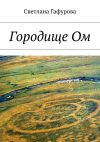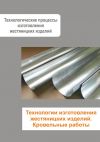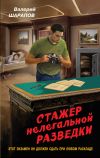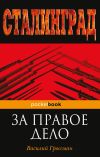Текст книги "История кузнечного ремесла финно-угорских народов Поволжья и Предуралья: К проблеме этнокультурных взаимодействий"
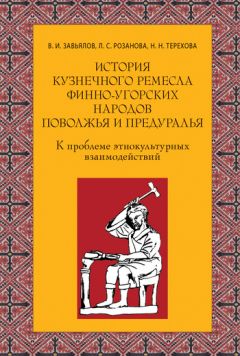
Автор книги: Владимир Завьялов
Жанр: Культурология, Наука и Образование
сообщить о неприемлемом содержимом
Текущая страница: 12 (всего у книги 13 страниц)
Перевощиков, Пастушенко 2006 – Перевощиков С. /.'.. Пастушенко И. К). «Косы-горбуши» в средневековых памятниках Прикамья // Российские немцы: история и современность. Ижевск, 2006.
Погребова, Раевский 1992 —Погребова М. П., Раевский Д. С. Ранние скифы и Древний Восток. М., 1992.
Поляков 1980 – Поляков Ю. А. Гляденовская культура в Среднем и Верхнем Прикамье (III в. до н. э. – середина VI в. н. э.): Автореф. дис. к. и. н. М., 1980.
Пшеничнюк 1967 – Пшеничнюк А. Х. О периодизации кара-абызских памятников // Ученые записки. № 148. Пермь, 1967.
Розанова 1994 – Розанова Л. С. К вопросу о технических приемах изготовления железных изделий из Старой Ладоги в докняжеский период // Новгородские археологические чтения. Новгород, 1994. Розанова 2003 – Розанова Л. С. К технологической характеристике кузнечных изделий с городища Варварина Гора// В. А. Буров. Городище Варварина Гора. Поселение I–V и XI–XIV веков на юге Новгородской земли. М., 2003.
Розанова 2005 —Розанова Л. С. Результаты металлографического исследования железных предметов из Никитинского могильника // Воронина Р. Ф., Зеленцова О. В., Энговатова Л. В. Никитинский могильник. Публикация материалов раскопок 1977—78 гг. М., 2005.
Розанова, Терехова 1988 – Розанова Л. С, Терехова П. П. Технологическая характеристика железных изделий из памятников Курского Посеймья // КС И Л. Вып. 194. 1988.
Розанова, Терехова 1990 – Розанова Л. С, Терехова II. II. Связи археологических культур Волго-Камья и Северного Кавказа в раннем железном веке по данным металлографии // Congressns septimus internationalis 1 inno-l gi istai um. Debrecen, 1990.
Розанова, Терехова 2000a – Розанова Л. С, Терехова П. Н Культурные контакты азелинских племен (по данным археологической металлографии) //' Научное наследие А. 11. Смирнова и современные проблемы археологии Волго-Камья. Материалы научной конференции. М., 2000.
Розанова, Терехова 20006 – Розанова Л. С, Терехова П. Н Кузнечные традиции летописных финно-угров: к проблеме культурных контактов // Российская археология: достижения XX и перспективы XXI вв. Ижевск, 2000.
Розанова, Терехова 2002а – Розанова Л. С, 'Терехова II. II. К проблеме кавказских и местных традиций в технологии изготовления железных изделий из Старшего Ахмыловского могильника// КС И Л. Вып. 213. 2002.
Розанова, Терехова 20026 – Розанова Л. С, Терехова Н. Н Особенности технологии изготовления наконечников копий у волжских финнов в VIII–VI вв. до н. э. // Исторические истоки, опыт взаимодействия и толерантности народов Приуралья. Ижевск, 2002.
Розанова, Терехова 2003 – Розанова Л. С, Терехова II. II. Этнокультурный фактор в становлении железообработки у населения Среднего Поволжья в ананьинскую эпоху// Чтения, посвященные 100-летию деятельности В. А. Городцова в Государственном Историческом музее. Тезисы конференции. Ч. II. М., 2003.
Розенфельдт 1974 – Розенфельдт И. Т. Керамика дьяковской культуры // Дьяковская культура. М., 1974.
Розенфельдт 1987 – Розенфельдт Р. А. Прикамские финны // Археология СССР. Финно-угры и б ал ты в эпоху средневековья. М., 1987.
Рябинин 1989 – Рябинин Е. А. Могильник и селище у д. Попово на р. Ун же // Раннесредневековые древности Верхнего Поволжья (материалы работ Волго-Окской экспедиции). М., 1989.
Сарачева 2005 – Сарачева Т. Г. Технология изготовления ювелирных изделий Никитинского могильника // Р. Ф. Воронина, О. В. Зеленцова, А. В. Энговатова. Никитинский могильник. Публикация материалов раскопок 1977—78 гг. М., 2005.
Сванидзе 1980 – Сванидзе А. А. Средневековый город и рынок в Швеции XIII–XV веков. М., 1980.
Седов 1987 – Седов В. В. Племена рязано-окской культуры // Финно-угры и балты в эпоху средневековья. Археология СССР. М., 1987.
Седов 2002 – Седов В. В. Славяне: Историко-археологическое исследование. М., 2002.
Семы кип 1993 – Семыкин Ю. А. Технологическая характеристика кузнечного инвентаря из Тураевского могильника // Новое в средневековой археологии Евразии. Самара, 1993.
Семы кип 1996 – Семыкин Ю. А. Черная металлургия и металлообработка на Болгарском городище // Город Болгар. Ремесло металлургов, кузнецов, литейщиков. Казань, 1996.
Смирнов, Трубникова 1965 – Смирнов А. П., Трубникова Н. В. Городецкая культура// САИ. Вып. /П -14. М., 1965.
Смирнов 1970 – Смирнов К. А. Железные изделия Троицкого городища// МИЛ. М> 156. 1970.
Смирнов 1974 – Смирнов К. А. Дьяковская культура (материальная культура городищ междуречья Оки и Волги) // Дьяковская культура. М., 1974.
Спицын 1901 – Спицын А. А. Древности бассейнов рек Оки и Камы // MAP. 1901. № 25.
Станкус 1971 – Станкус И. История технологии производства железных изделий на территории Литвы во II–XIII вв. // Автореферат дне. канд. ист. наук. Вильнюс, 1971.
Старостин 1967 – Старостин П. II. Памятники именьковской культуры // САИ. Вып. Д1-32. М., 1967.
Старостин 2001 – Старостин П. Н. Именьковская культура // Очерки по археологии Татарстана. Казань, 2001.
Старостин, Хомутова 1981 – Старостин II. //.. Хомутова Л. С. Железообработка у племен именьковской культуры // СА. М>3. 1981.
Тавадзе и др. 1977 – Тавадзе Ф. II., Сакварелидзе Т. II., Абесадзе Ц. II., Двали Т. А. К истории железного производства в древней Грузии // Реставрация, консервация, технология музейных экспонатов. Т. 2. Тбилиси, 1977.
Терехова 1983 – Терехова Н. Н. Кузнечная техника у племен кобанской культуры Северного Кавказа в ранне-скифский период // СЛ. № 3. 1983.
Терехова 1984 – Терехова II. Н. Развитие техники железообработки у восточно-кобанских племен // XIII «Крупновские чтения» по археологии Северного Кавказа. Тезисы докладов. Майкоп, 1984.
Терехова 1985 – Терехова, Н. Н. Технология изготовления оружия скифского типа на Кавказе (к проблеме – Скифы и Кавказ») // Всесоюзная археологическая конференция «Достижения советской археологии в XI пятилетке». Тезисы докладов. Баку, 1985.
Терехова 1986 – Терехова Н. Н. Технология изготовления кузнечных изделий из могильника Султан-Гора // КС И Л. Вып. 186. 1986.
Терехова 1987 – Терехова Н. Н. Сравнительная характеристика техники обработки черных металлов в скифскую эпоху в различных регионах Восточной Европы // Задачи советской археологии в свете решений XXVII съезда КПСС. М., 1987.
Терехова 1989 – Терехова II. II. Характеристика техники кузнечного производства железных изделий из Келер-месских курганов и Келермесского грунтового могильника в Гиагинском р-не // Меоты – предки адыгов. Майкоп, 1989.
Терехова 1990 – Терехова Н. Н. Технологическая характеристика железных изделий из курганного могильника скифского времени Нартан // СА. № 4. 1990.
Терехова и др. 1997 – Терехова II. II., Розанова Л. С, Завьялов В. И., Толмачева М. М. Очерки по истории древней железообработки в Восточной Европе. М., 1997.
Терехова, Хомутова 1985 – Терехова Н. Н., Хомутова Л. С. Освоение человеком химико-термических и термических процессов на раннн. э.апах становления железообрабатывающего производства в Восточной Европе // Человек и окружающая среда в древности и средневековье. М., 1985.
Толмачева 1989 – Толмачева М. М. Технология обработки железа в лесостепном регионе салтовской культуры // Естественнонаучные методы в археологии. М., 1989.
Третьяков 1966 – Третьяков II. II. Финно-угры, бал i ы и славяне на Днепре и Волге. М.; Л., 1966.
Хазанов 1971 —Хазанов А. М. Очерки военного дела сарматов. М., 1971.
Халиков 1977 —Халиков А. Х. Волго-Камье в начале эпохи раннего железа (VIII–VI вв. до н. э.). М., 1977.
Халиков 1992 —Халиков А. Х. О судьбе населения ананьинской общности на Нижней Каме // Археологические памятники зоны водохранилищ Волго-Камского каскада. Казань, 1992.
Хан 2004 – Хан Н. А. Доходность булгарской торговли в XIV в. // КС И Л. Выи. 217. 2004.
Хомутова 1978 – Хомутова Л. С. Металлообработка на поселениях дьяковской культуры //' СА. Л» 2. 1978.
Хомутова 1981 – Хомутова А. С. История железообрабатывающего производства у дославянского населения Волго-Окского междуречья в I тысячелетии н. э.: Авто-реф. дне. канд. ист. наук. М., 1981.
Хомутова 1982 – Хомутова Л. С. Кузнечная обработка на поселениях Смоленщины в эпоху железа // КСИА. Выи. 170. 1982.
Черных 1962 – Черных Е. II. Спектральное исследование цветного металла Акозинского могильника // Труды Марийской археологической экспедиции. Т. 11. Йошкар-Ола, 1962.
Черных 1970 – Черных Е. Я. Древнейшая металлургия Урала и Поволжья. М., 1970.
Членова 1988 – Членова Я. А. О культурной принадлежности Старшего Ахмыловского могильника, новомордовских стелах и «отделившихся скифах» // КСИА. Вып. 194. 1988.
Шадрин 2001 – Шадрин А. И. Результаты исследования железных предметов из Буйского городища // Древности Поволжья и Прикамья. Йошкар-Ола, 2001.
Шрамко 1969 – Шрамко Б. А. Орудия скифской эпохи для обработки железа // СА. № 3. 1969.
Шрамко 1984 – Шрамко Б. А. Из истории скифского вооружения // Вооружение скифов и сарматов. Киев, 1984.
Шрамко 1994 – Шрамко И. Б. Развитие кузнечного ремесла у племен бассейнов Ворсклы и Пела в скифскую эпоху // Древности 1994. Харьковский историко-археологический ежегодник. Харьков, 1994.
Шрамко и др. 1963—Шрамко Б. А., Солнцев А. А., Фомин А. Д. Техника обработки железа в лесостепной и степной Скифии /7 СА. № 4. 1963.
Шрамко и др. 1970—Шрамко Б. А., Фомин А. Д., Солнцев А. А. Технiка виготовлення сюфскоi наступальноi зброi iз залiза и сталi // Археолопя. № 23. Кит, 1970.
Шрамко и др. 1971—Шрамко. Б. А., Фомин Л. Д., Солнцев Л. А. Новые исследования техники обработки железа в Скифии//СА. № 4. 1971.
Шрамко и др. 1977 – Шрамко Б. А., Фомин А. Д. Солнцев А. А. Начальный этап обработки железа в Восточной Европе (доскифский период) // СА. № 1. 1977. Шрамко и др. 1986—Шрамко Б. А., Солнцев А, А., Фомин А. Д.
К вопросу о железообрабатывающем ремесле в степной Скифии // СА. № 2. 1986. Энговатова 2004 – Энговатова А. В. Хронология городища
Настасьино по данным радиоуглеродного анализа // Археология Подмосковья: Мат-лы научного семинара. М., 2004.
Ястребов 1893 —Ястребов В. Н. Лядинский и Томниковский могильники // MAP. № 10. 1893.
Arrhenius 1989 — Arrhenius В. Sistematische Analisen der Groberfunde. Stokholm, 1989.
Biborski 1978 —BiborskiM. Miecze z okresu wplzwow rzymskich na obszarze kultury przeworskej // MA. XVIII. 1978.
Biborski et al. 1982 — Biborski M., Kaczanowski P., Kqdyierski Z., StqpinskiJ. Metallographsche Untersuchungen als Kriterium einer identification romischer Schwerter // Archaeologia Interregionalis. Ancient Iron Manufacture Centres in Northern Central Europe. Krakow-Warszawa, 1982.
Biborski et al. 2003 — Biborski M., Kaczanowski P., Kqdzierski Z., Stqpinski J. Manufacturing technology of double and single edged swords from the 1st century ВС and 2nd century AD // Archaeometallurgy in Europe. Milan, 2003.
Brewer 1976 — Brewer C. W. Metallographic examination of six ancient steel weapons // History of Metallurgy. Vol. 10. №. 1. 1976.
Peets 2003 —Peets J. The power of iron. Tallinn, 2003.
Piaskowski 1963 — Piaskowski J. Cechy charakterystyczne wyrobow zelaznych produkowanych przez starozytnych hutnikow w Gorach Swi^tokrzyskich w okresie wplywow rzymskich (I–IV w. n. e.) // Studia z dziejow gornictwa i hutnictwa. No. VI. Wroclaw, 1963.
Piaskowski 1976 —Piaskowski. J. Classification of the structures of slag inclusions in early objects made of biometry iron 11 Archeologia Polona. Vol. XVII. 1976.
Piaskowski 1984 —Piaskowski J. Koncepcja starozytnego?elaza «swi^tokrzyskiego» w swiete nowych badan // Studia i materialy z dziejow nauki Polskie. Seria D.Z. 10. 1984.
Piaskowski 1988 — Piaskowski J. Rodzaja rud stosowanych do wytopu?elaza w ziemiach Polskich, 1988.
Pleiner 1961 —Pleiner R. Slovansk? sekerovite h?ivny // SA. IX (1–2). 1961.
Pleiner 1967 —Pleiner R. O metodze identyfikacji?eleza w zna– leziskach archeologicznych // Kwartalnik Historii Nauki I Techniki. T. 2. z. 1. Warszawa, 1967.
Pleiner 1983 — Pleiner R. Zur Technik von Messer Klingen aus Haithabu // Ausgrabungen in Haithabu. Neumiinster, 1983.
Pleiner 2006 — Pleiner R. Iron in Arhaeology: Early European Blacksmiths. Praha, 2006.
Radwan 1966—RadwanM. Starozytne hutnictwo?wi^tokrzykie 11 Zeszyty naukowe Akademii G?rniczo-Hutniczej. R. 57. Krak?w, 1966.
Sedlar, Piaskowsk 1961 — Sedla? W., Piaskowski J. Znalezienie lupek zelaza Swi^tokrzyskiego oraz ich charakterystyka metalogi ahczna// KHKM. R. IX. № 1. 1961.
Stankus 1970 — Stankus J. Gele?ies dirbinnj gamybos Lietuvoje V–VIII am?iais // Lietuvos TSR Mokshj Akademijos darbai, AserijaS. Vilnius, 1970.
Thomsen 1971 —Thomsen R. Metallographische Untersuchung an drei wikingtrzeitlichen Eisen?xten aus Haithabu // Berichte iiber die Ausgrabungen in Haithabu. Vol. 5. Untersuchungen zur Technologie des Eisens. Miinster,
1971.
Tomtland 1973 — Tomtland J. – E. Metallographic investigation of 13 knives from Helg? // Early Medieval Studies, 5. Stockholm, 1973.
Zavyalov 2003 — Zavyalov V. I. The knives of Polom culture: typology and technology // Archaeometallurgy in Europe. Vol.1. Milan, 2003.
Summary
The history of blacksmith's craft of the Finno-Ugrian peoplesin the Volga and the West Ural regions
(The problem of ethno-cultural interactions)
V. I. Zavyalov, L. S. Rozanova, N. N. Terekhova
According to the archaemetallograph ic dcitti we have obtained, we can single out three general stages in the history of ferrous metalworking technique of the Finno-Ugrian peoples of the Volga and the West Ural regions. The first one (the 8th—6th cc. ВС) consists in acquaintance with ferrous metal under the influence of other cultures that arose from the contacts of local population with the Caucasian peoples. The second stage (from the second half of the 1st millennium ВС to the 8th c. AD) includes formation of local blacksmith traditions and establishing of technical and technological stereotype. The third stage (the 9th—13th cc.) is connected with alteration of the stereotype under the influence of alien cultures against the background marked by the involvement of the Finno-Ugrian peoples into the influence of the early states.
The data obtained by metallographic examinations of blacksmith products from the archaeological sites of Finno– Ugrian peoples dating to different epochs let us trace cultural and historic relationships in the production sphere.
In the region of the Volga and the Kama rivers these connections were revealed in the most dramatic way in the Early Iron Age as the phenomenon of a sudden spread of developed blacksmith products in the Middle Volga area in the Anan'ino cultural entity. In the early Anan'ino period (the 8th—6th cc. ВС) the southern (Caucasian) archeologically documented direction of relationships is confirmed by our analytical data that show real forms and character of the contacts. Initially specific character of blacksmith contacts was revealed in penetration of the Caucasus-type artefacts; later craftsmen from the Caucasus appeared in the discussed region. Our investigation shows, there is every reason to believe that some types of spearheads were made locally by alien craftsmen. These goods date from the late 8th—7th cc. ВС, thus we may suppose that alien craftsmen were coming in that period. In other words, the chronological gap between the appearance of first blacksmith products and coming of alien craftsmen was insignificant. We believe that alien craftsmen got into the medium of the population related to the Starshee Akhmylovo cemetery, and worked primarily to satisfy its demands. The other Anan'ino tribes obtained blacksmith products by the way of in-group tribal exchange. Probably, the stay of alien craftsmen here was not permanent, and they did not enroot into local background. The alien craftsmen apparently preserved their clan structure; despite they developed contacts with local bronze-makers for production needs, they did not display them their technological achievements.
As time went on, local Finno-Ugrian specialists in nonferrous metalworking became familiar with the modes of producing and processing ferrous metals. They produced goods that were in fact iron copies of local artefacts traditionally made of bronze (celts and flat axes). However, two basic technological secrets of ferrous metalworking practiced by alien Caucasian craftsmen – deliberate production of steel and use of heat-treatment – remained unknown to the local smiths.
Caucasian traditions were not deeply introduced into the system of local ironworking. The impact obtained by the local tribes consisted only in assimilation of ferrous metal and the most primitive modes of its processing.
In the Volga-Kama region Caucasian traditions in ferrous metalworking disappeared together with the disappearance of the Akhmylovo phenomenon. Still, the idea of iron production was conceived thanks to the metallurgic experience of local bronze founders. We can trace the realization of this idea in the late Anan'ino period in the Middle Kama region. Here, as we have shown, local metallurgical production was established in the 5th – 4th cc. ВС, which is well documented archeologically. We prove the spread of metallurgic idea by the character of raw material used in the 5th—3rd cc. ВС in the Middle Kama region: it was low-phosphorous metal, the same as in the early Anan'ino period on the Middle Volga. It gives evidence of exploitation of similar ore sources. The goods themselves are represented by simple shapes produced in limited quantity, and show a primitive technology, which has no connections with the blacksmith technique revealed in the Akhmylovo material.
In the 2nd с. ВС – the 2nd c. AD development of iron production in the Volga-Kama region can be seen in the held of metallurgy: local people started to use bog and meadow iron ores. The late Anan'ino traditions were preserved in the held of technology. Ironworking made its appearance in the periphery of the Volga-Kama region (in the beginning of the 1st millennium AD the new metal appeared at the Glyadenovo sites as far as the Vychegda region). We can trace back the contacts in production sphere between local groups of population that resulted in formation of technological stereotype, which determined further development of blacksmith craft. This stereotype could be characterized by the following features: limited assortment of iron artefacts, use of iron or raw steel for production, use of piled welding technology for producing blanks, and an extremely rare use of carburization and heat-treatment techniques.
In the 3rd—5th cc. (Azelino and Mazunino cultures) against the background of local production made by the well-estab– lished stereotype we can clearly single out imported goods, which illustrates the pattern of external contacts in the shape of artefacts exchange. As an example of such contacts we point to the presence of artefacts similar by their shape and technology, such as axe-like objects both at the sites of local (Azelino and Mazunino) and alien (Imen'kovo and Turaevo) population. As far as these items are not specific of the Finno-Ugrian circle of artefacts, they appear to have been imported. Apparently, they were produced by the Imen'kovo people (only in the Imen'kovo sites such objects have been found in associations).
The materials of the 5th—8th cc. give evidence that technical and technological stereotype in blacksmith's craft of the Volga-Kama population (Polom and Lomovatovo cultures) did not change crucially. The changes affected only the proportion of characteristic features (increased number of steel objects).
The dramatic changes in ironworking are registered in the late 1st millennium AD. These were expressed in the spread of blacksmith products of new shapes and introduction of new technologies in local blacksmith craft. It was the period of change in the technical and technological stereotype. Welding becomes its characteristic feature (three-fold welding technology, weld– ing-in, and various kinds of welding-on). During the 9th—13th cc. three-fold welding technology turned to be basic scheme in the blacksmith production. The spread of this technology invented in Scandinavia, was related to the increase of trans-European trade by the Great Volga route. The idea of three-fold welding technology was accepted by local craftsmen. However, it was not always properly realized: sometimes the central strip forming the working edge was shaped of softer materials than the side strips, or it could have been made just of iron, or of phosphorous iron. Objects' shapes often were of local origin.
This new stereotype in ironworking ofthe Volga-Kamaregion was preserved until the middle of the 2nd millennium AD.
As for the Volga and Oka region, the earliest blacksmith production penetrated to the territory of D'yakovo culture from the Scythian world. However, it did not seriously affect the formation of local blacksmith's craft. It were the innovations related to the coming of alien population with certain techniques to the Moskva river area that played an essential part in formation of ironworking among the D'yakovo culture tribes (the late 1st millennium ВС). Among these innovations we should point to production of quality high-carbon steel, use of complicated technologies of welding together iron and steel, extensive use of heat-chemical and heat-treatment techniques in ferrous metalworking. The discussed stereotype gradually spread over the area of D'yakovo culture and remained unchanged until the end of the culture's existence, thanks to stable life conditions of the D'yakovo population for many centuries.
Another stereotype in the Volga-Oka region we can see from the materials of the Ryazan-Oka cemeteries culture and the Finno-Ugrian peoples known from the chronicles (the Mordvinians, the Merya, and the Muroma tribes). By its general features until the 9th c. it looks similar to what we have revealed in the Volga-Kama region. Despite various contacts of local population in other spheres, in ironworking not any technical innovations can be traced.
In the 9th c. same as in the Volga-Kama region, we see dramatic changes in blacksmith's craft here. Among the Merya tribes and the population of the Tver-Volga region the base of high-quality iron production (especially, in production of knives) becomes technological welding (with domination of three-fold welding). Along with the imported products made by the classical scheme of three-fold welding, we meet with local low-quality imitations of this technology. The spread of objects made by three-fold welding technology was related to involving the Merya tribes and the Tver-Volga region population into trans-European trade by the Great Volga route.
The Mordvinian tribes remained in the limits of traditional ways of ferrous metalworking. Their contacts in the production sphere were limited to the import of objects and rarely – to imitation of the imported models.
The extensive analytical material for the study of ironworking of the Finno-Ugrian peoples of the Volga and the West Ural regions we have used in this work allows us state that technical and technological stereotype in this branch of production is quite a stable element of culture. Stability of the production traditions during a long period of time is clearly seen. Despite numerous migrations, invasions of alien population into the territory of the Finno-Ugrian peoples, and transformations of local cultures, there were no noticeable changes in their blacksmithing until the 9th c. AD. It was the 9th c. when a sharp leap-forward occurred in the milieu of the Finno-Ugrian peoples of the Volga and the West Ural regions. It was connected with their involvement into trans-European trade system by the Great Volga-Baltic route. The transformation manifested itself in wide spread of blacksmith products of common European shapes and introduction of new technologies in local blacksmithing. A change of technical and technological stereotype took place: three-fold welding and welding-in technologies were adopted, heat-treatment of high-quality objects became a tradition, and a new kind of raw material – phosphorous iron – was used purposefully.
A different situation we can see by the example of the Mordvinian tribes. Here there was no change of technical and technological stereotype that could have been explained by their relative territorial isolation. The Mordvinians paid tribute to the Khazarian kaganate, and later to the Volga Bulgarian state. Hence, the alien influence on them was limited to acquirement of blacksmith products or local imitations of their shapes.
The objects (mainly knives) made by three-fold welding technique are the most significant markers of the Finno-Ugrian peoples' relationships in the 9th—11th cc. The earliest finds of this kind (the 7th—8th cc.) are known in Scandinavia. By the late 8th– 10th cc. these appeared in Eastern Europe in the sites that are considered trade and craft centres (Staraya Ladoga, Novgorod, Gnezdovo, Sarskoe hillfort and Krutik). At that time there traces of Scandinavian population's presence there are evident.
The products from these centres had immediately got great demand and spread in the Finno-Ugrian world quite rapidly up to rather distant ctTCclS (for example, the Permian tribes on the Vychegda). Technologically these goods could be easily discriminated from local products, and they mark the northwestern direction of contacts.
The idea of three-fold welding technology was adopted by local craftsmen. However, they did not clearly understand its core and specifics of its use (welding together phosphorous iron and high-carbon steel). The shapes of objects often remained local. The adopted innovation was used in the Perm blacksmithing until the 14th c., when it was abandoned in the Medieval Russian urban centres for a long time.
Our research demonstrates that the impulses in ironworking sphere traced over the long history of the Finno-Ugrian tribes, as a rule, were not developed by the local milieu. The Finno-Ugrian world looks rather conservative in the sphere of production.
Proceeding from the vast analytical data that characterize blacksmith's craft of different peoples in different epochs, we can state that technical and technological stereotype used in this production is quite a stable element of culture. To our opinion, the possibility of its change in pre-state formations is primarily connected with integration of alien cultures' bearers into aboriginal society. As for state structures, economic factors play decisive role and presuppose certain system of production organization (differentiation, regulation, institution of apprenticeship, etc.) and distribution of products.
Translated by L. I. Avilova
Правообладателям!
Это произведение, предположительно, находится в статусе 'public domain'. Если это не так и размещение материала нарушает чьи-либо права, то сообщите нам об этом.

